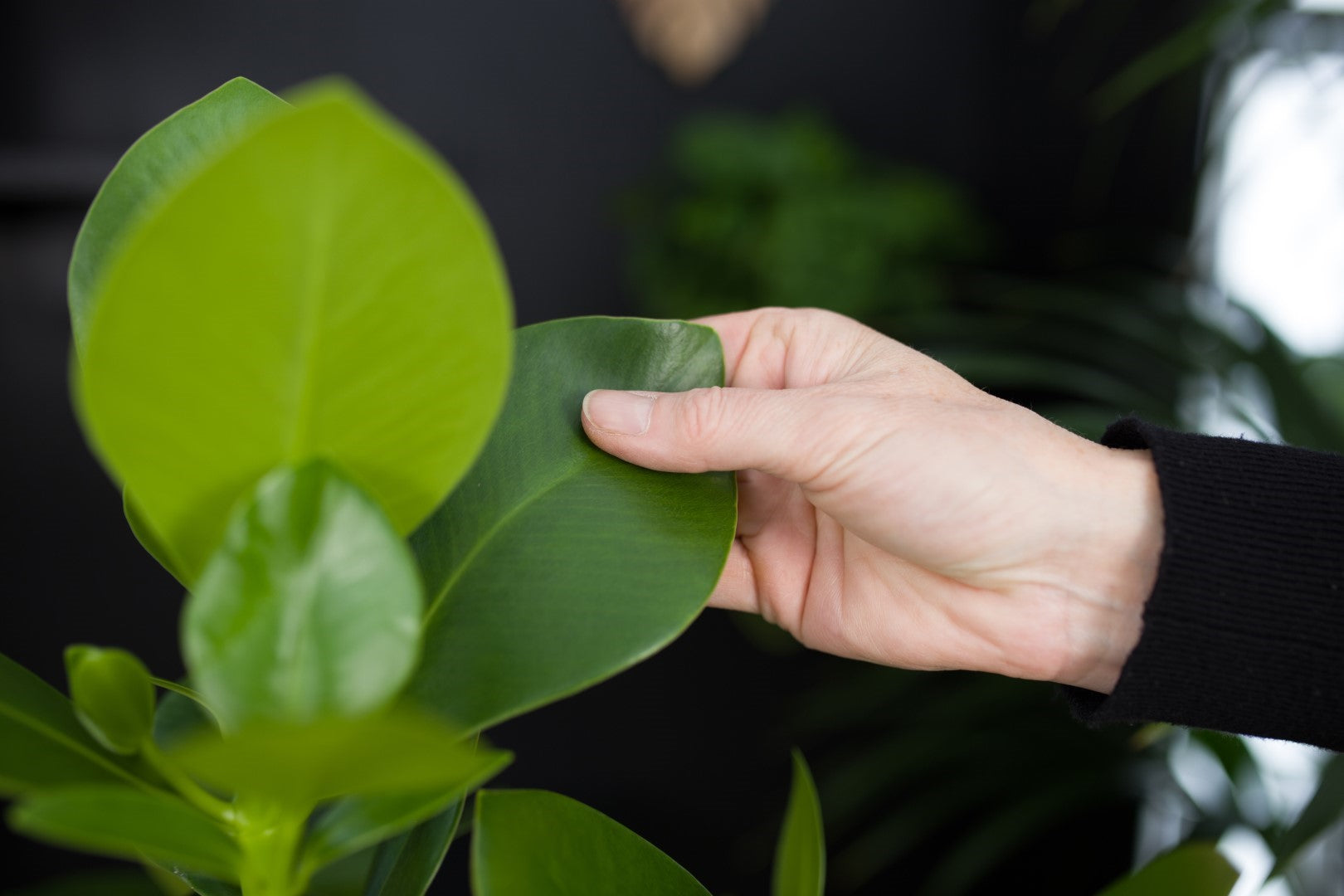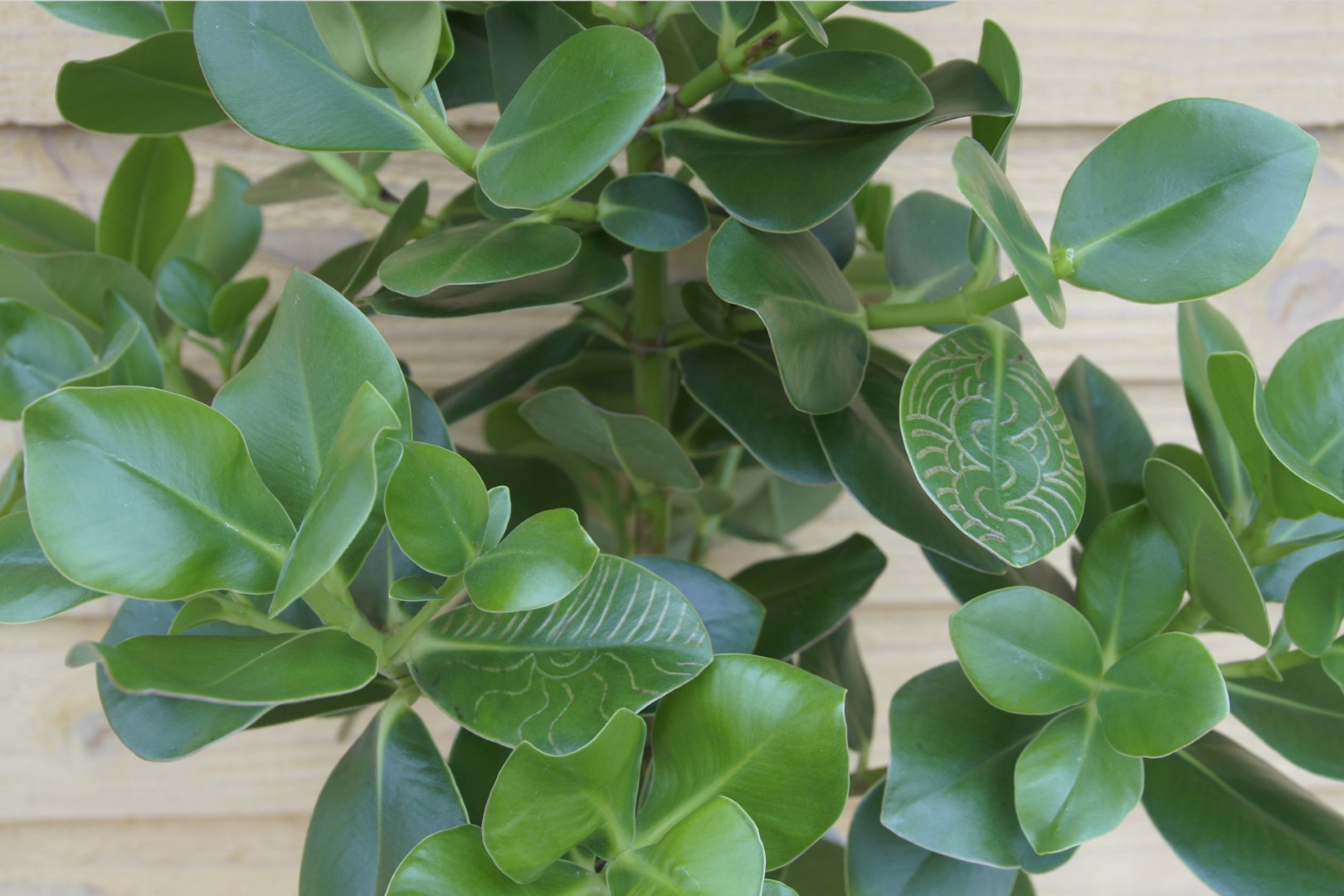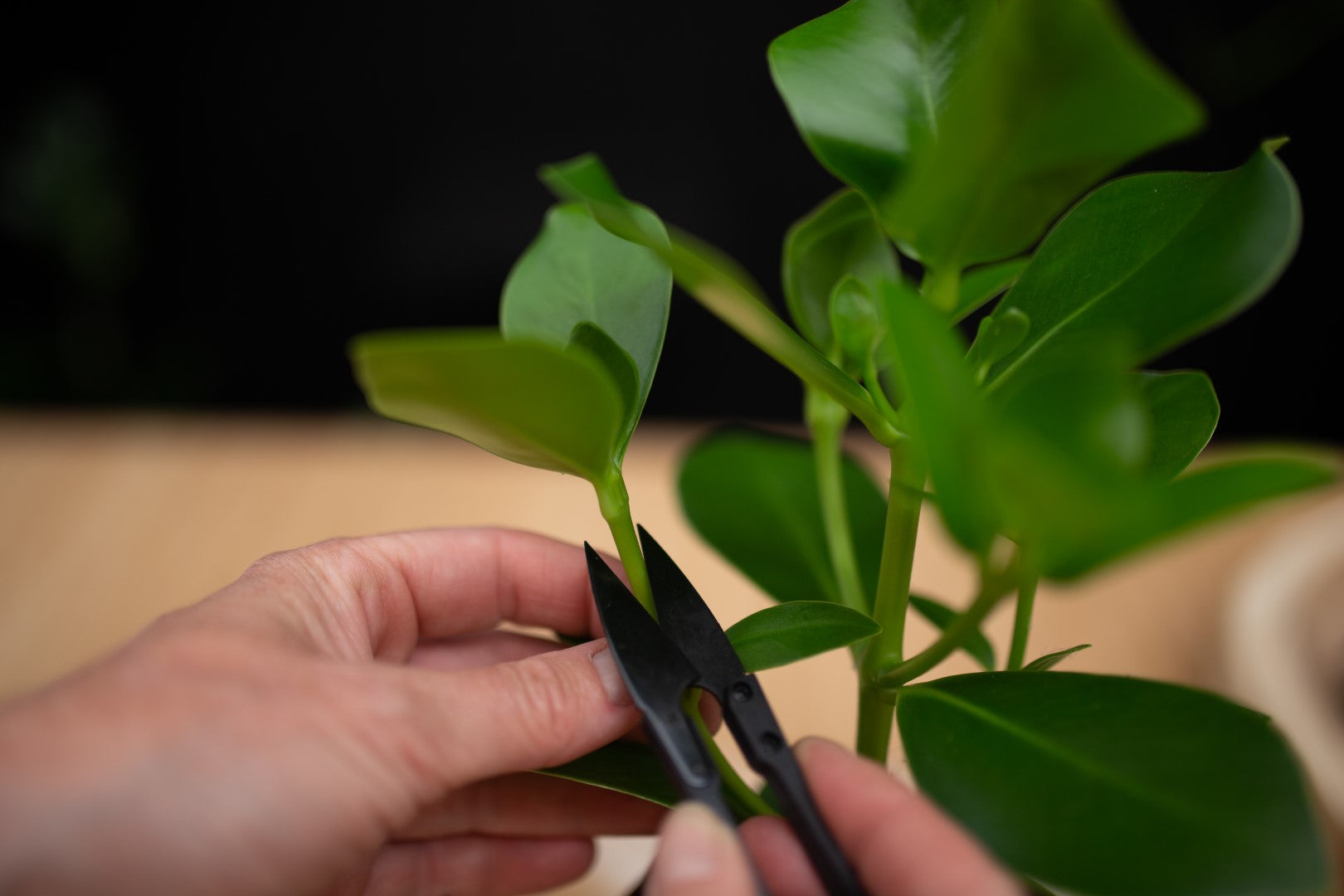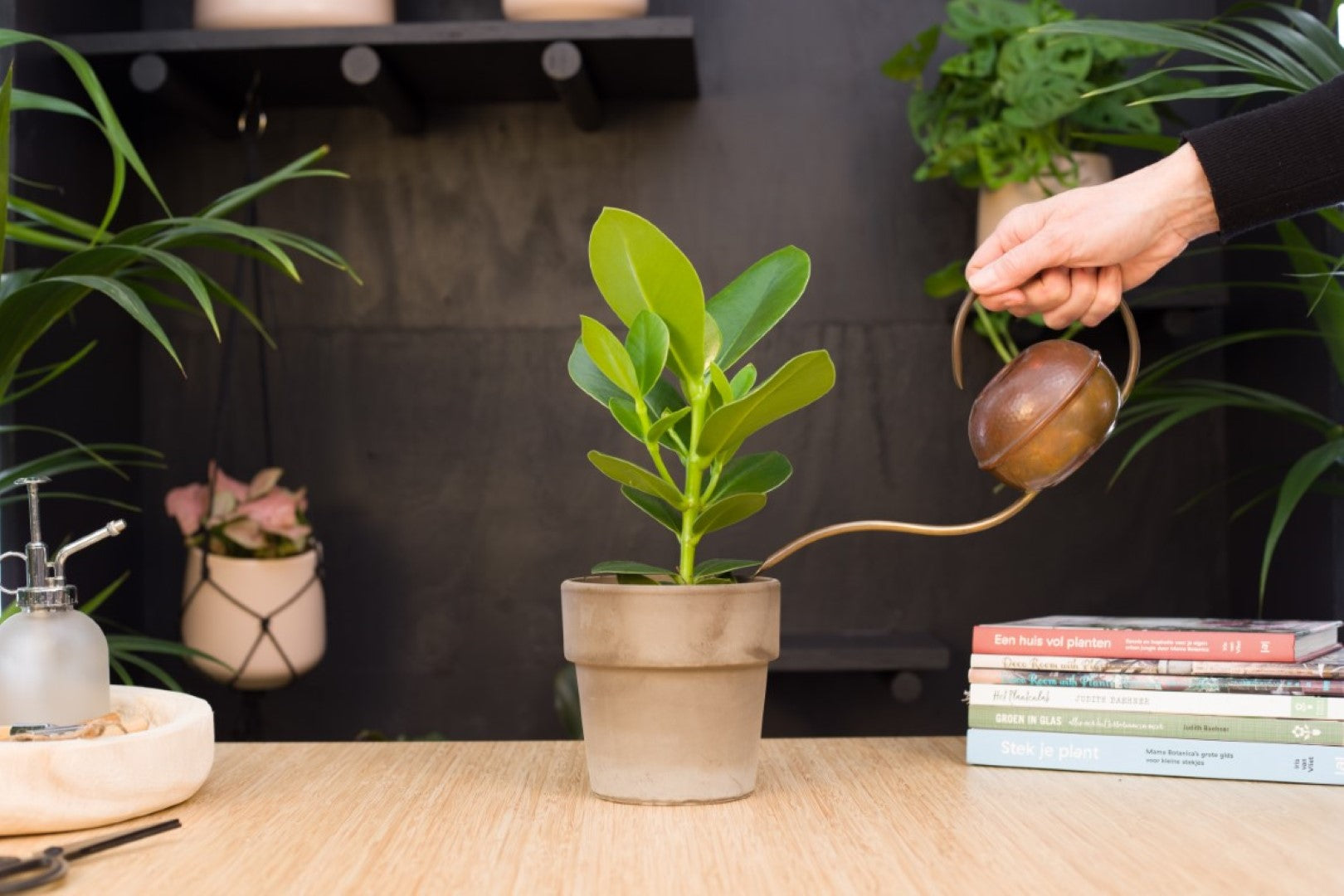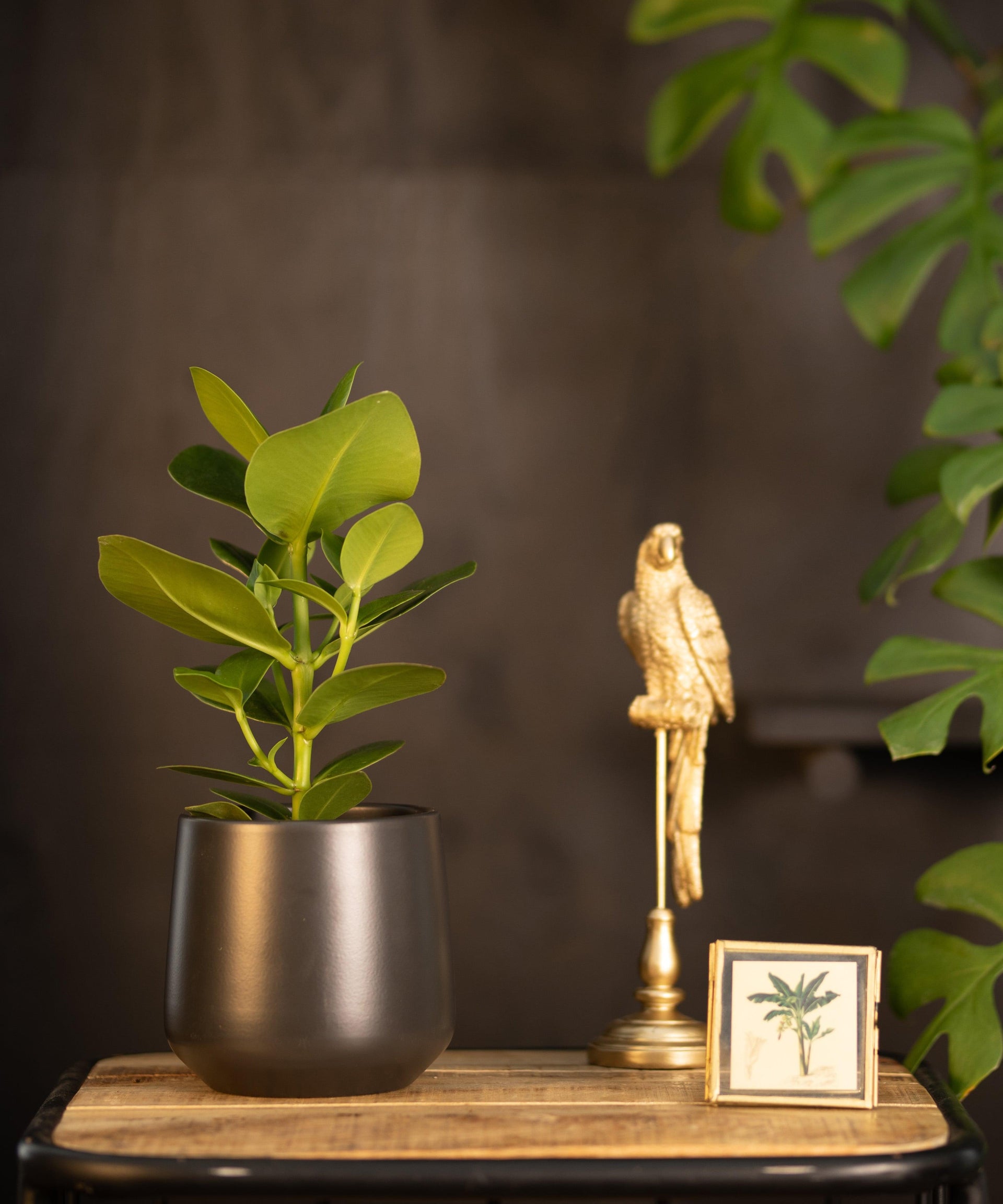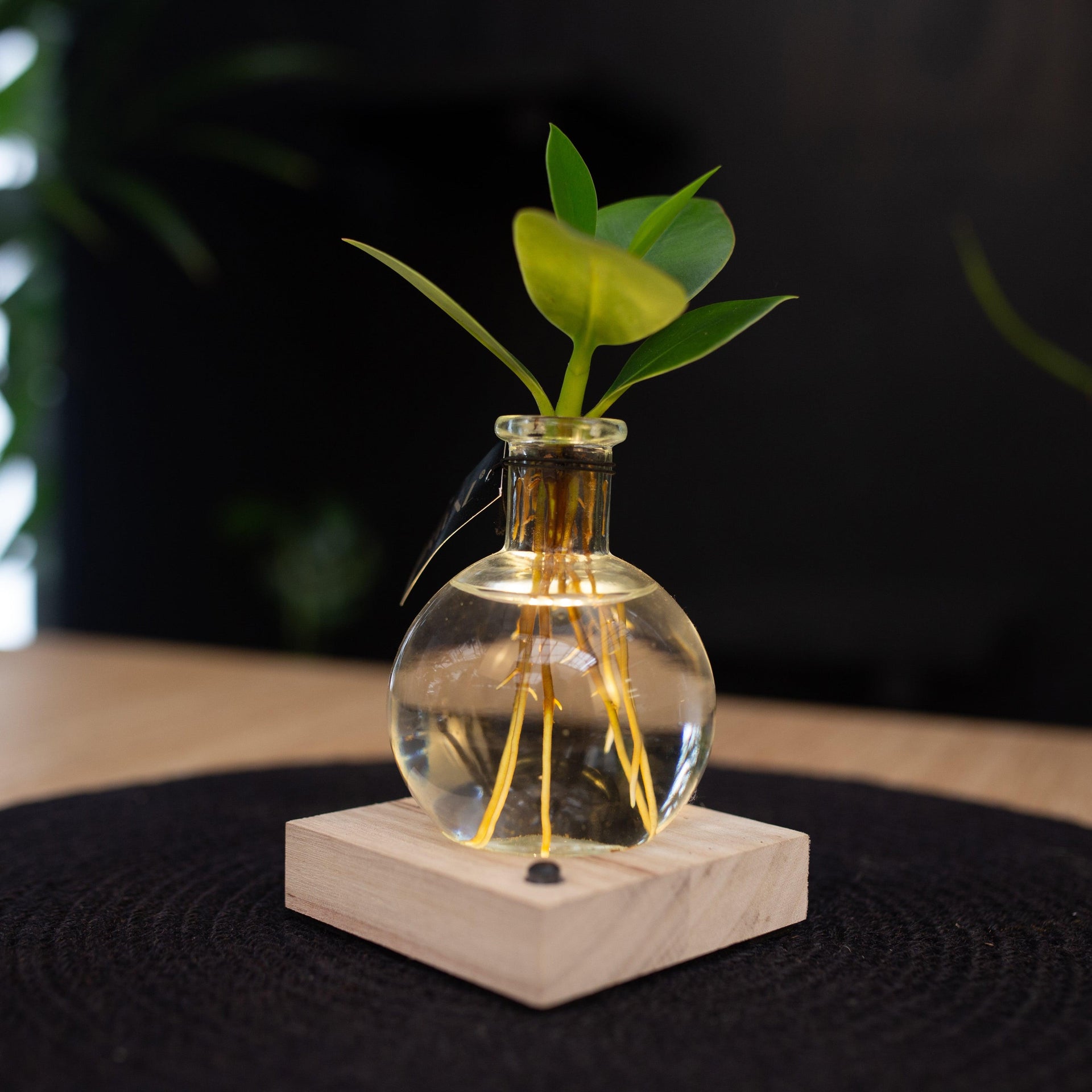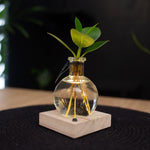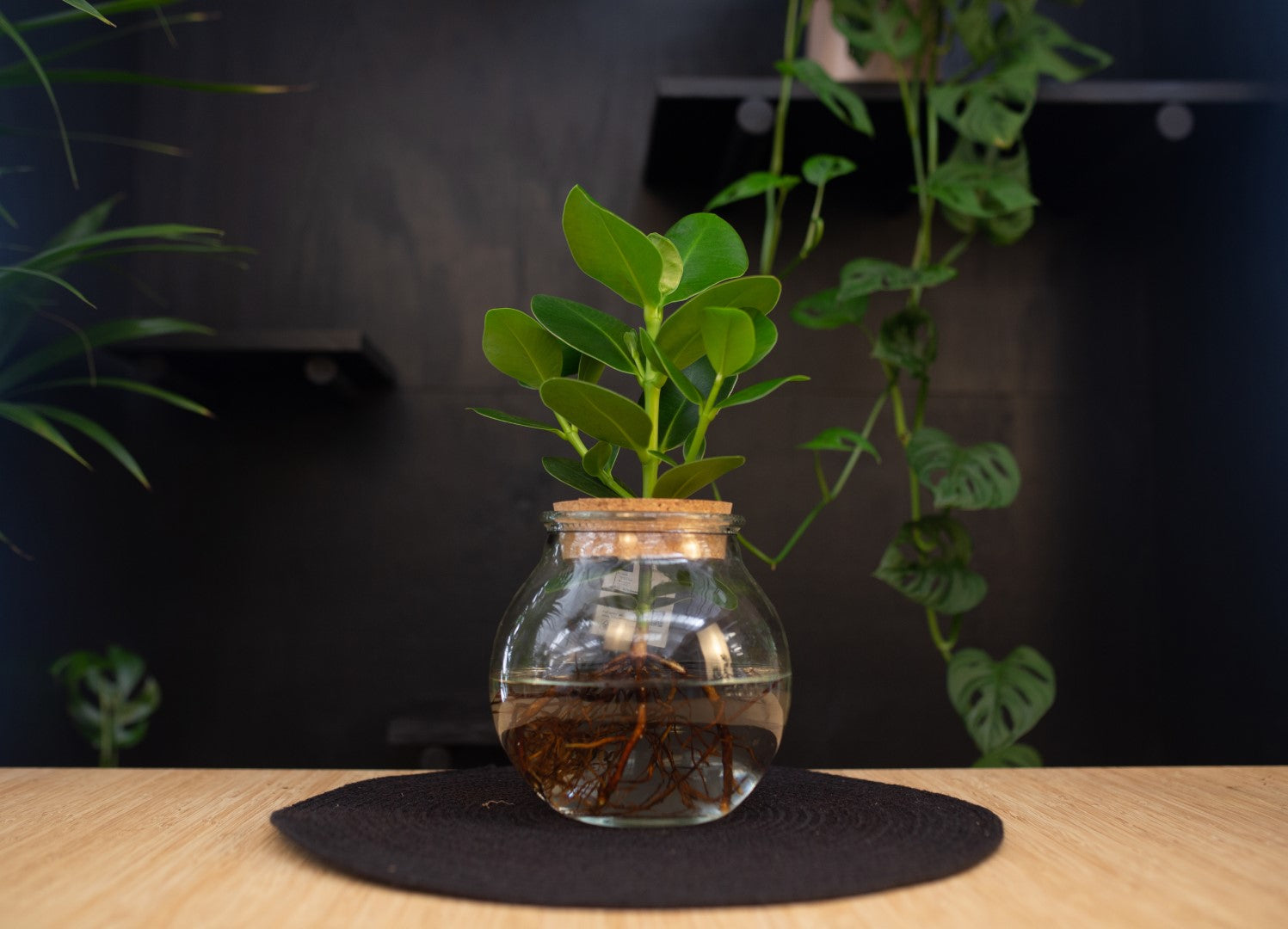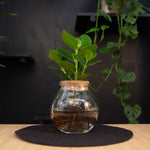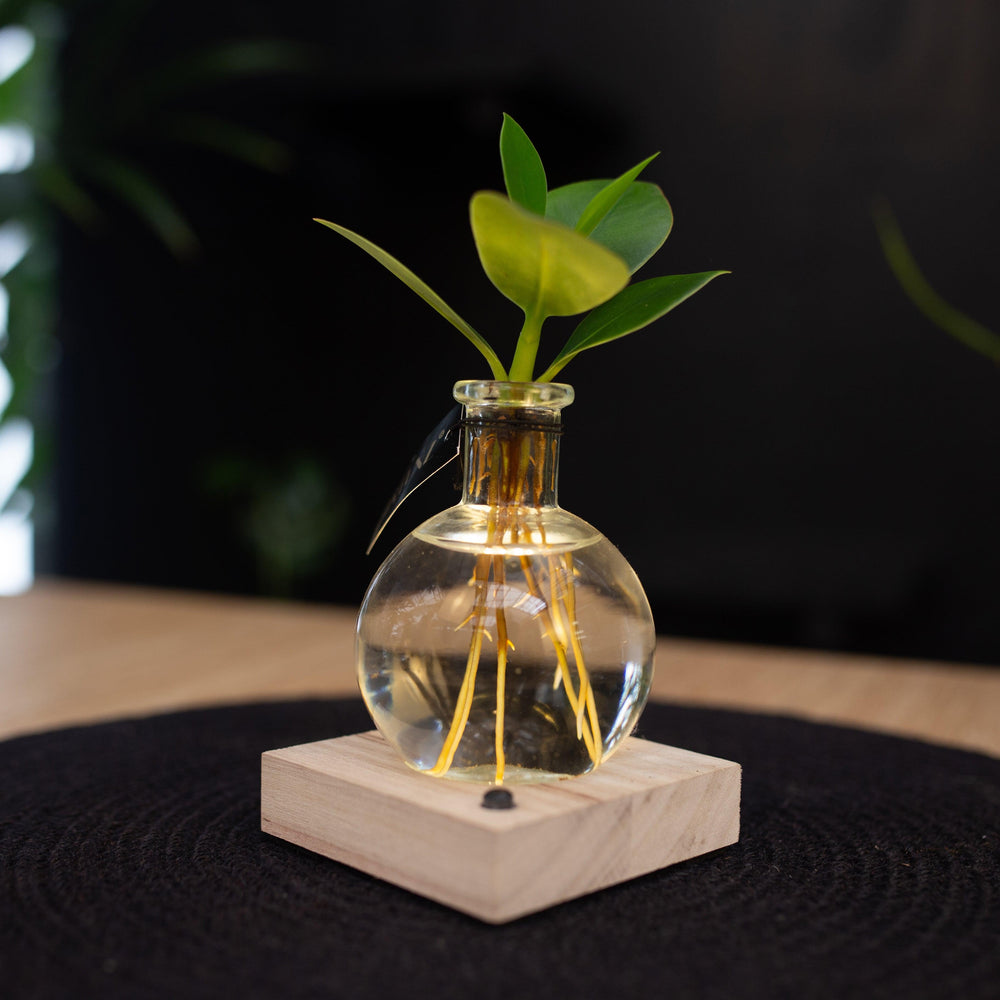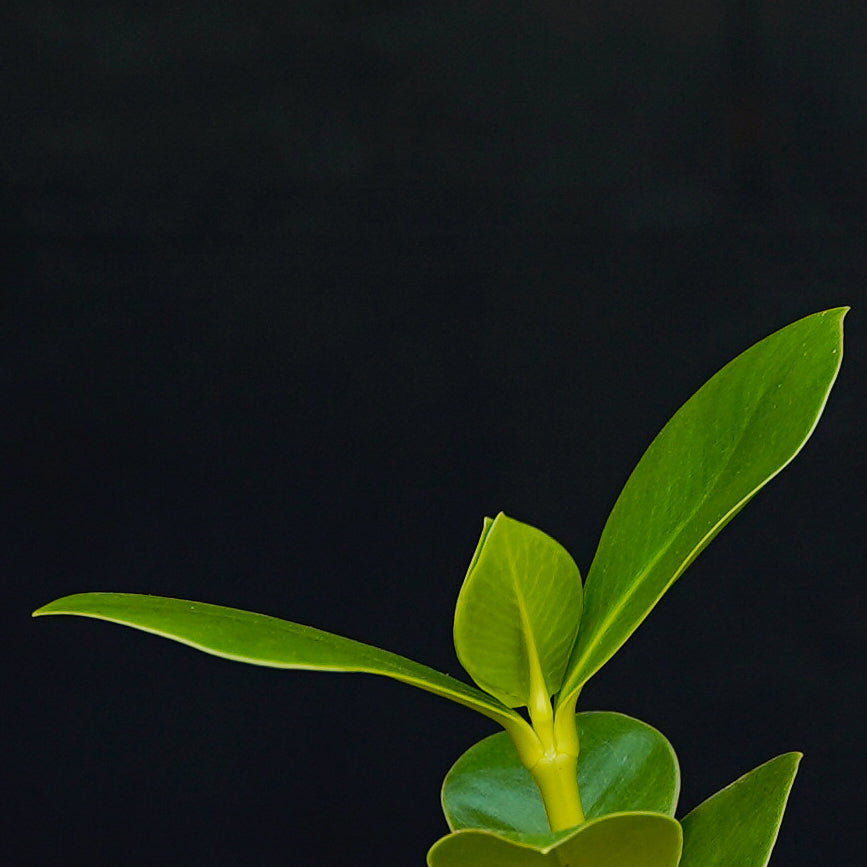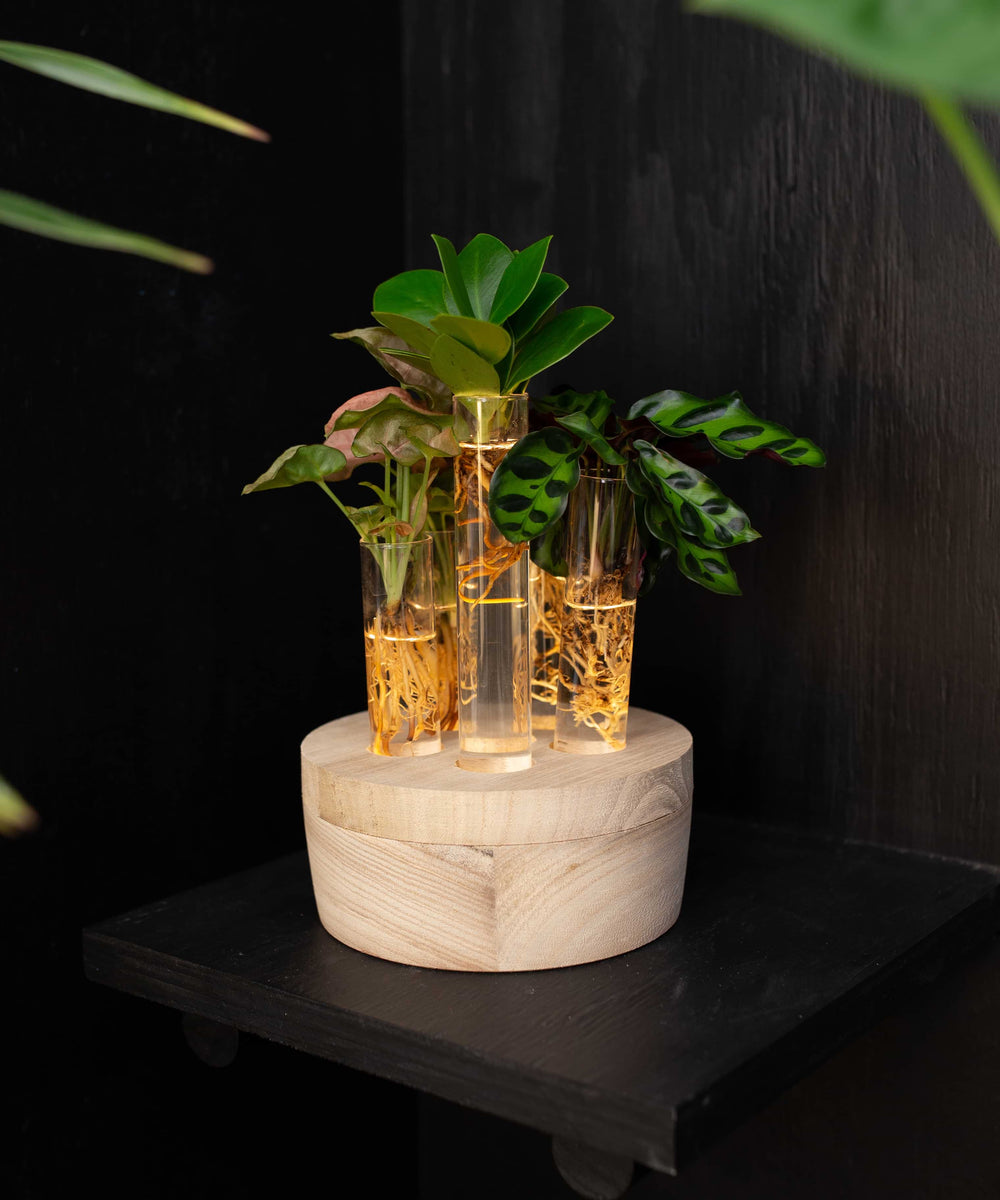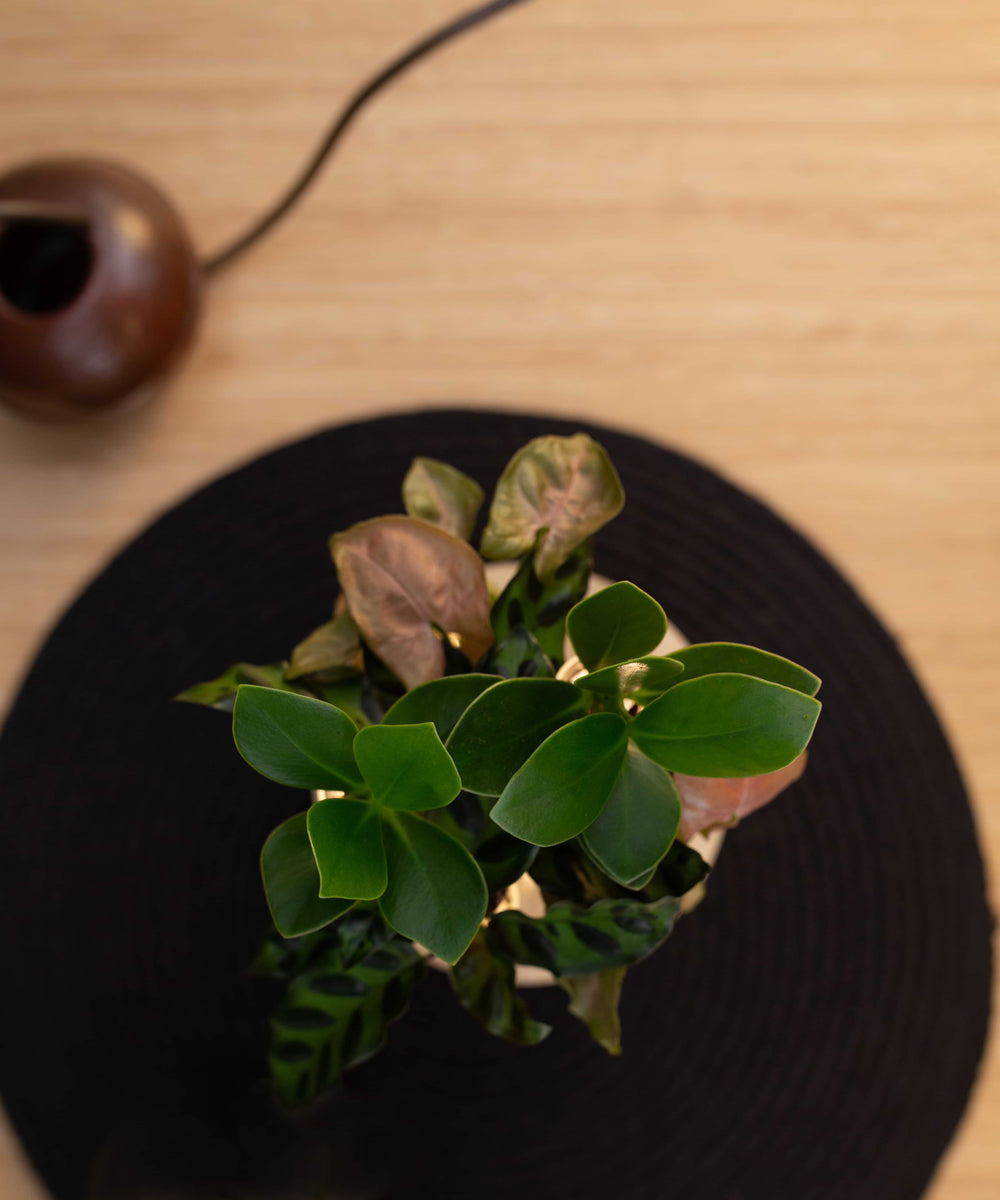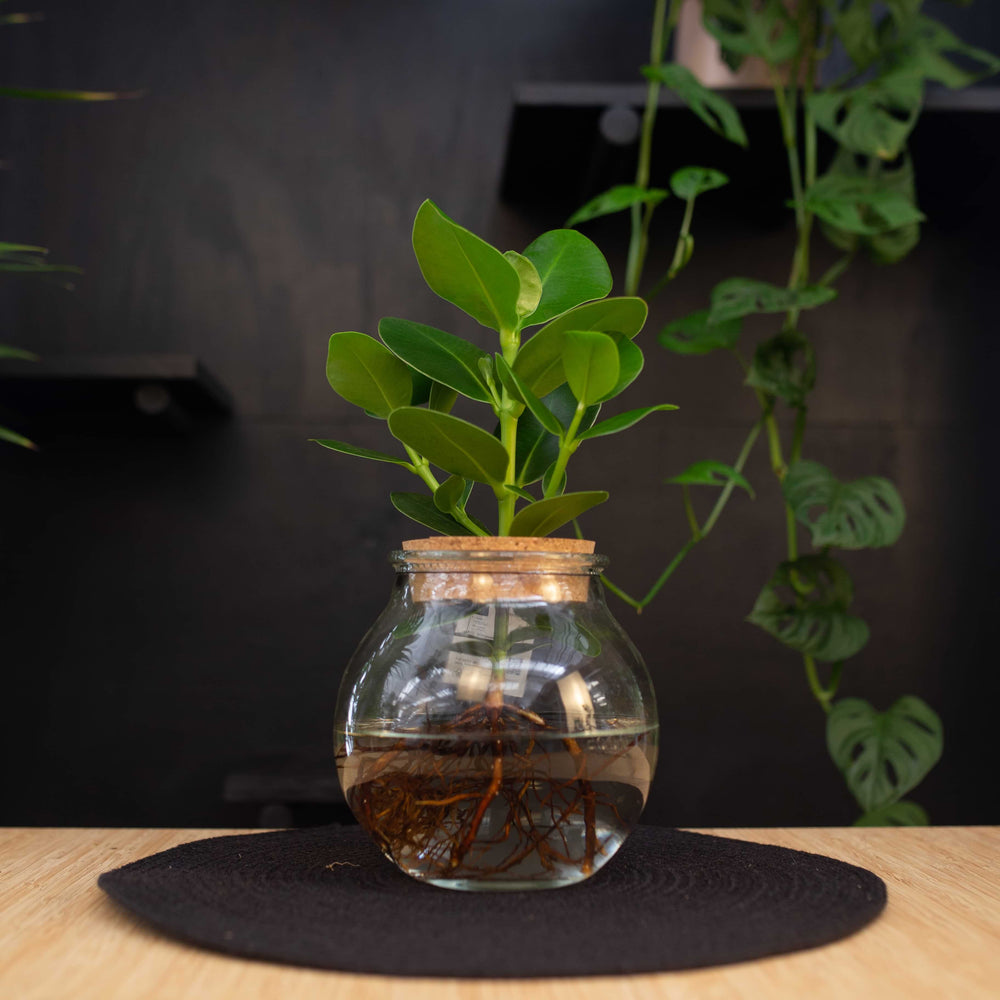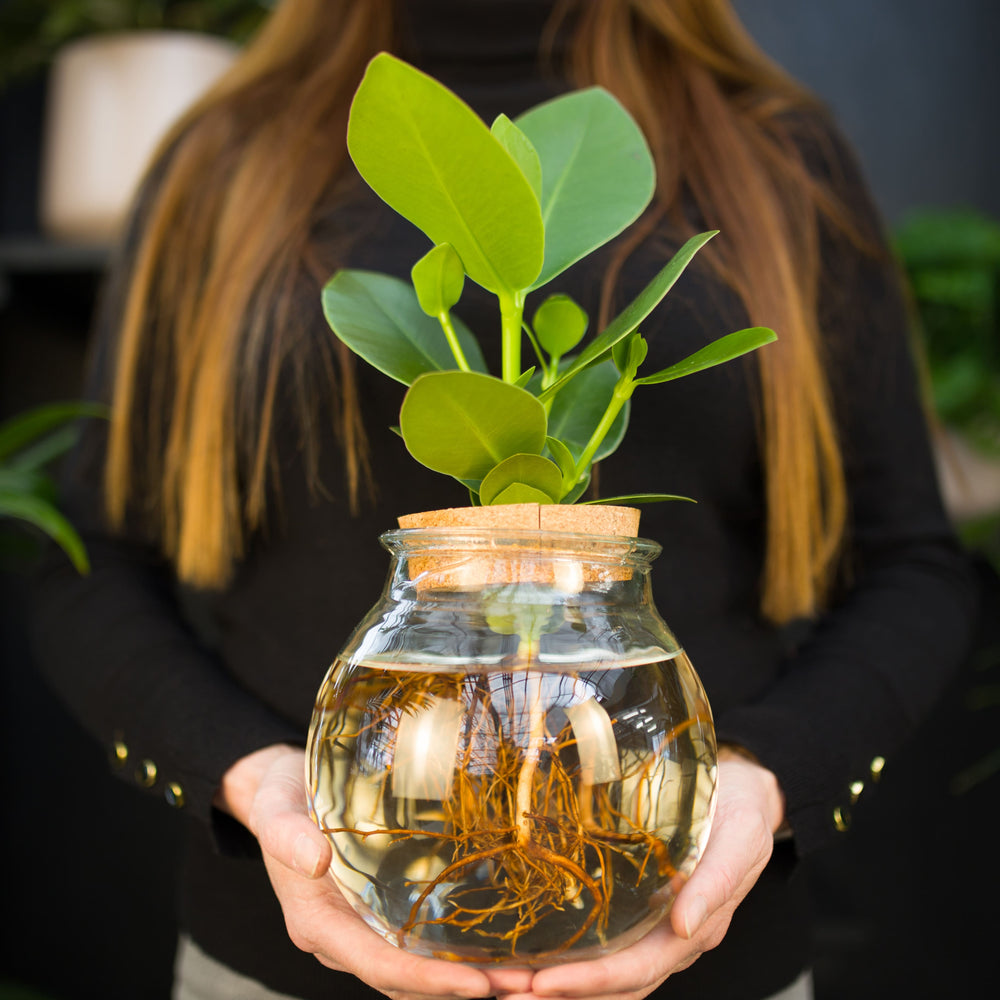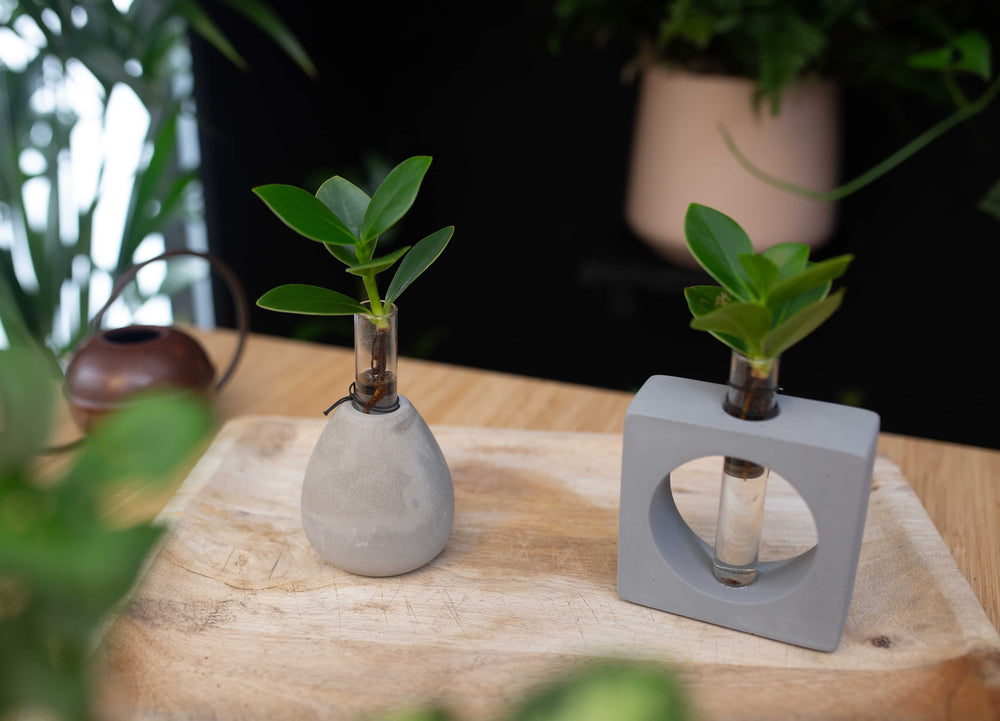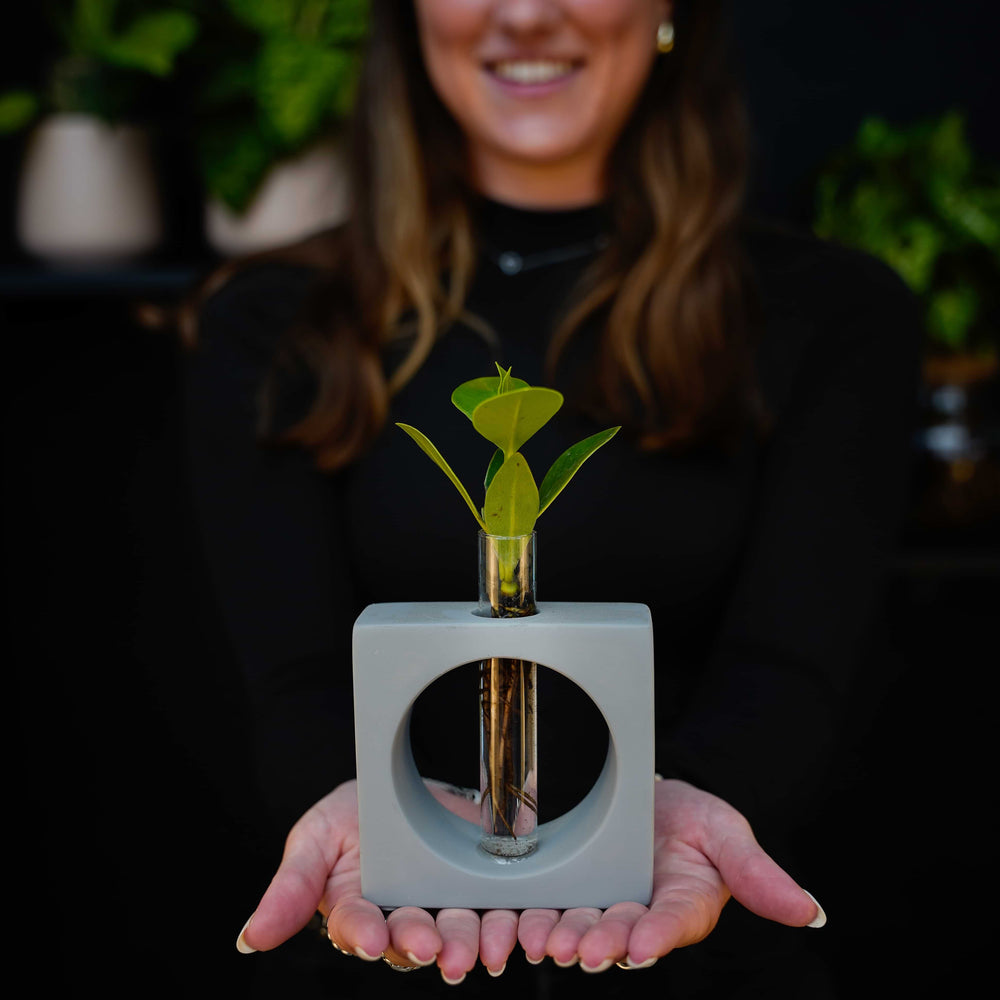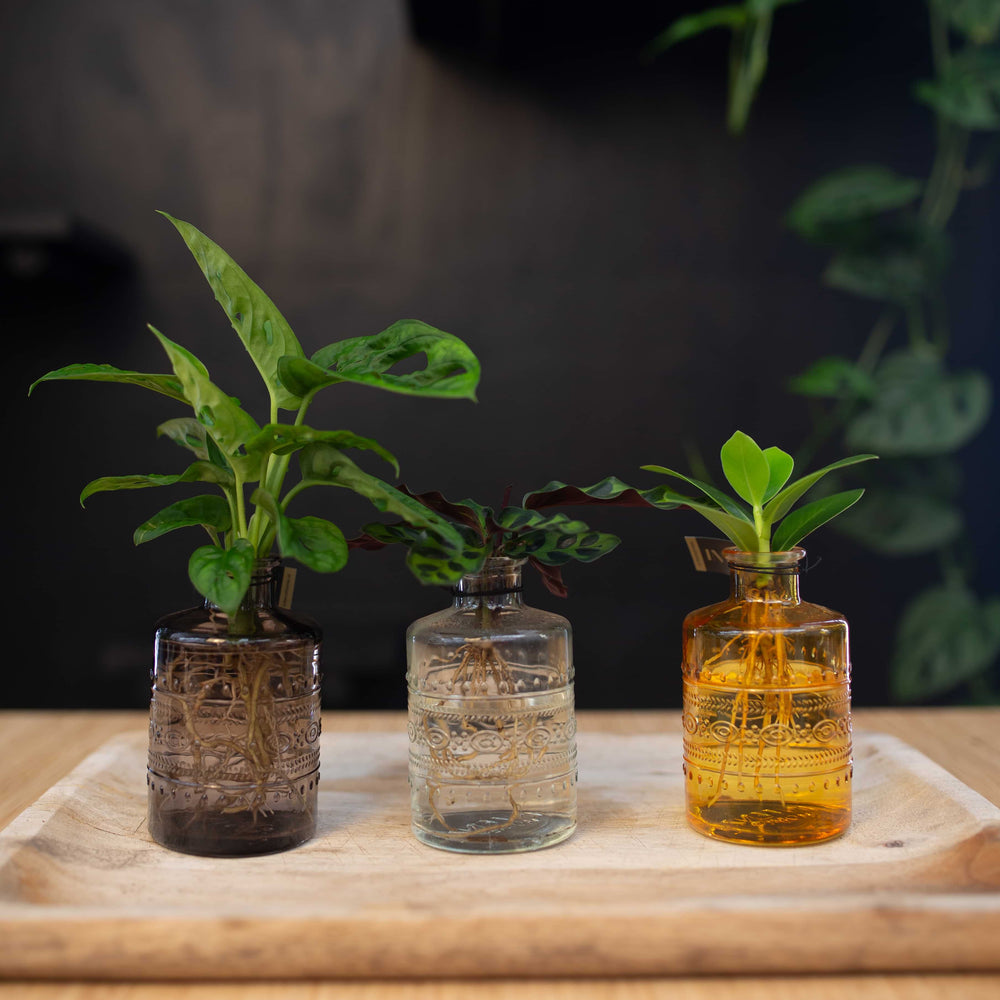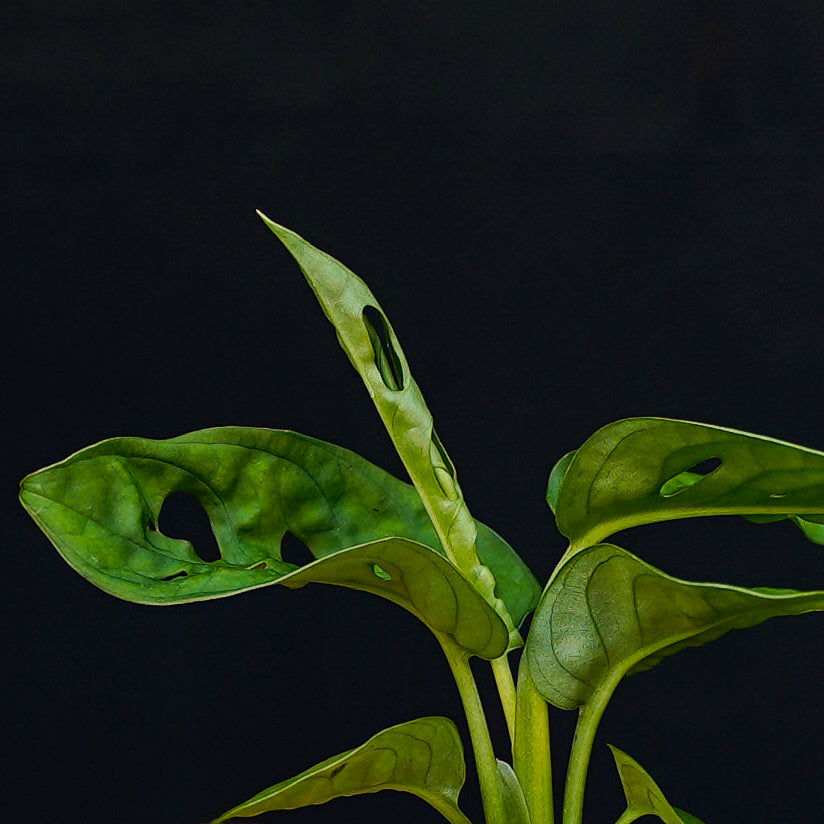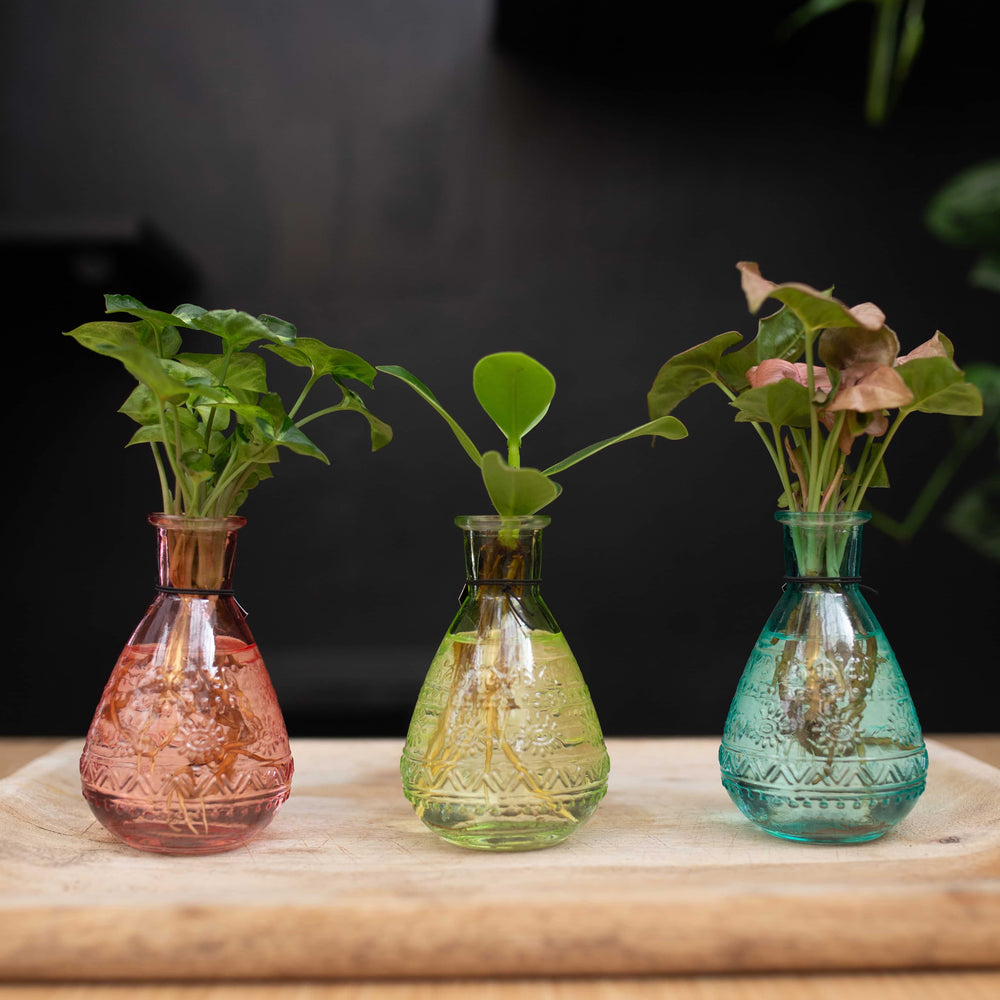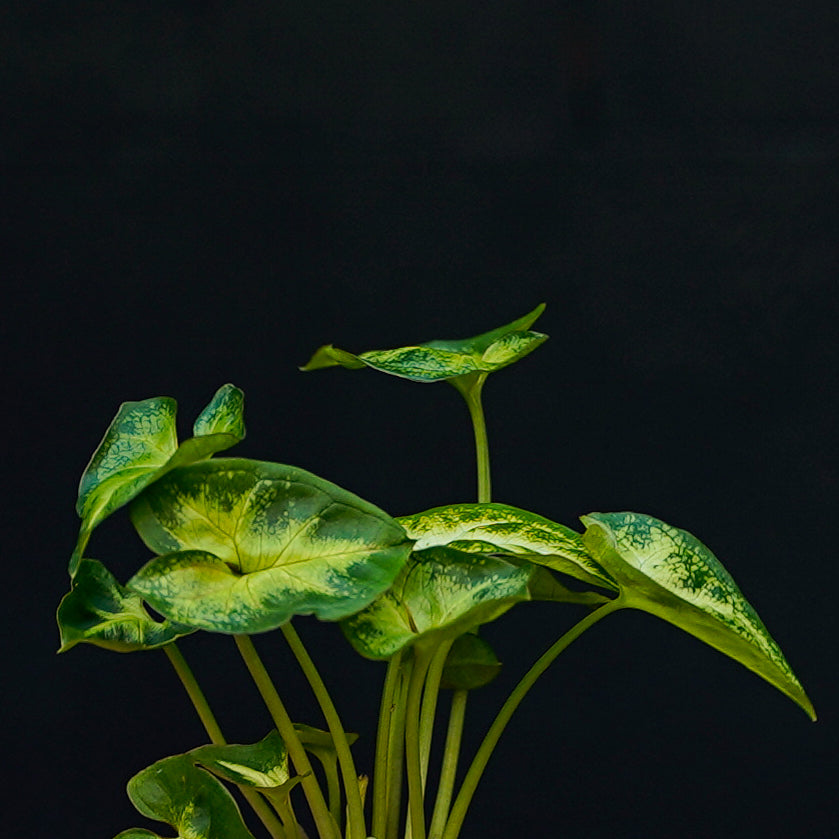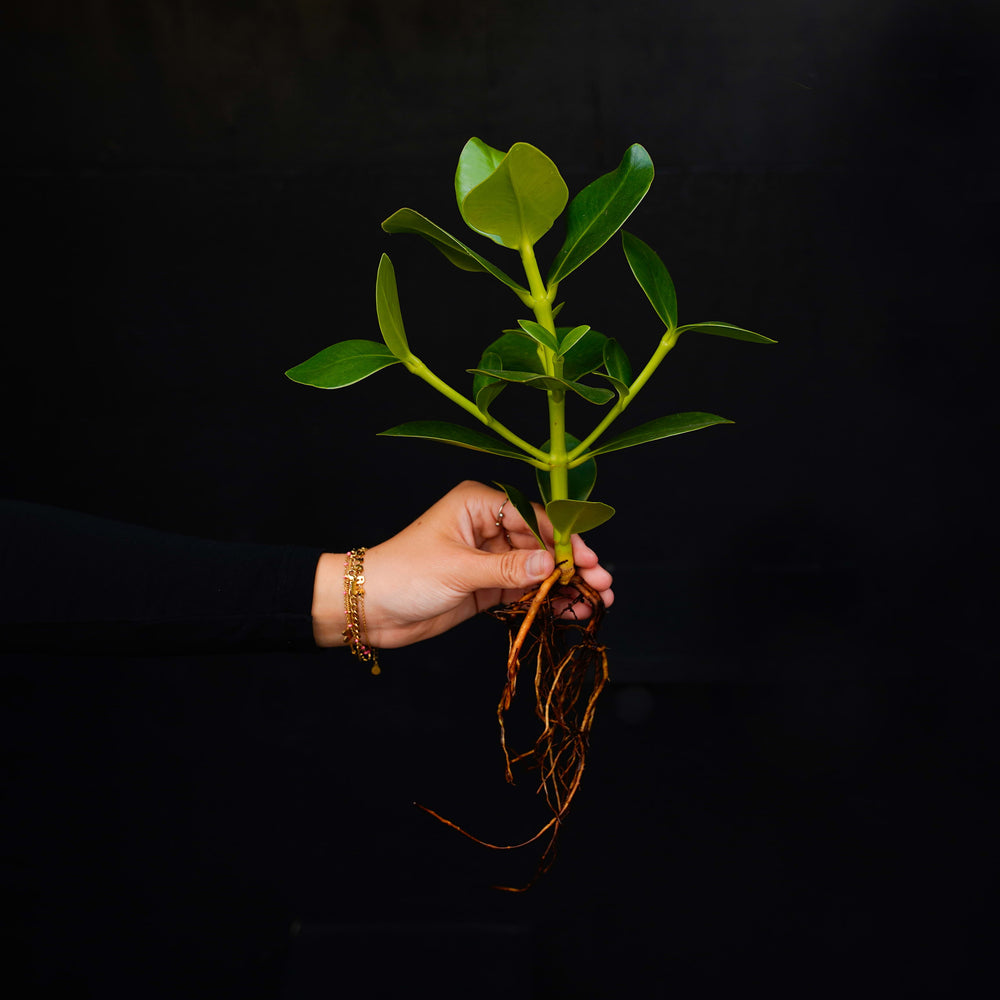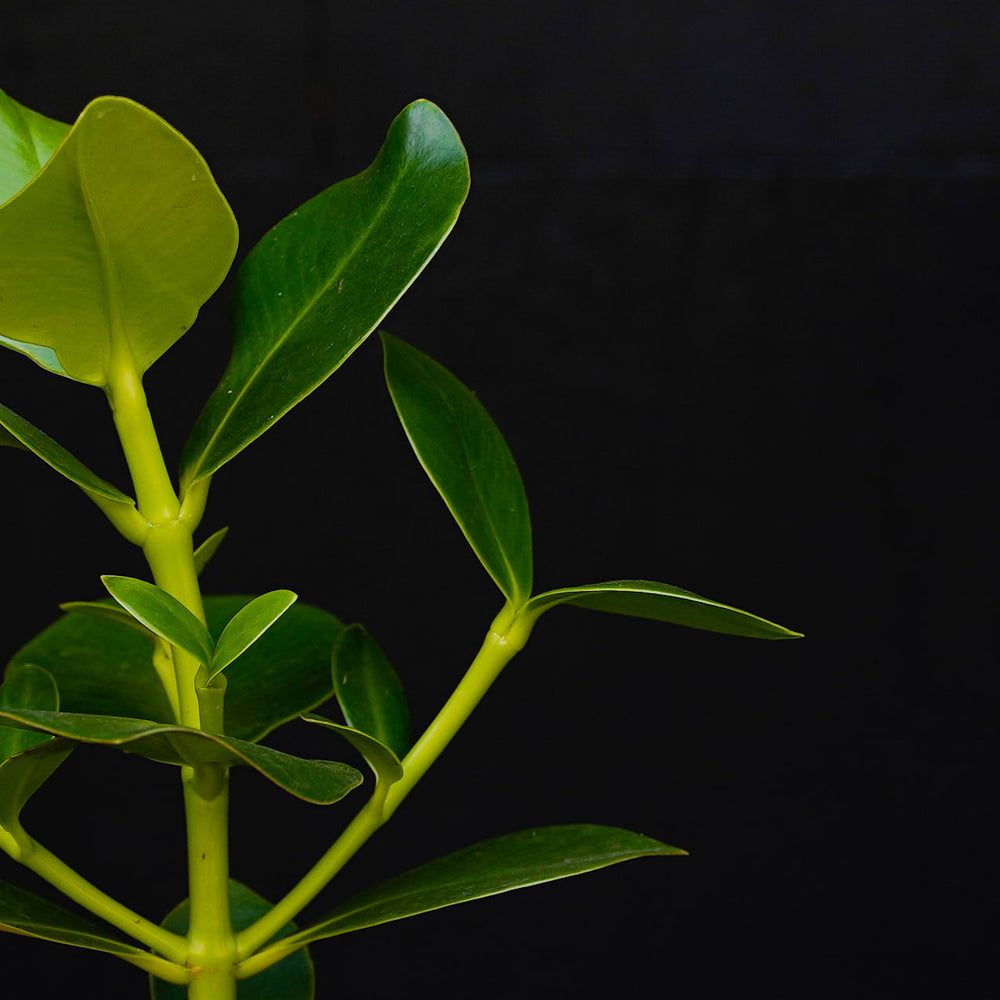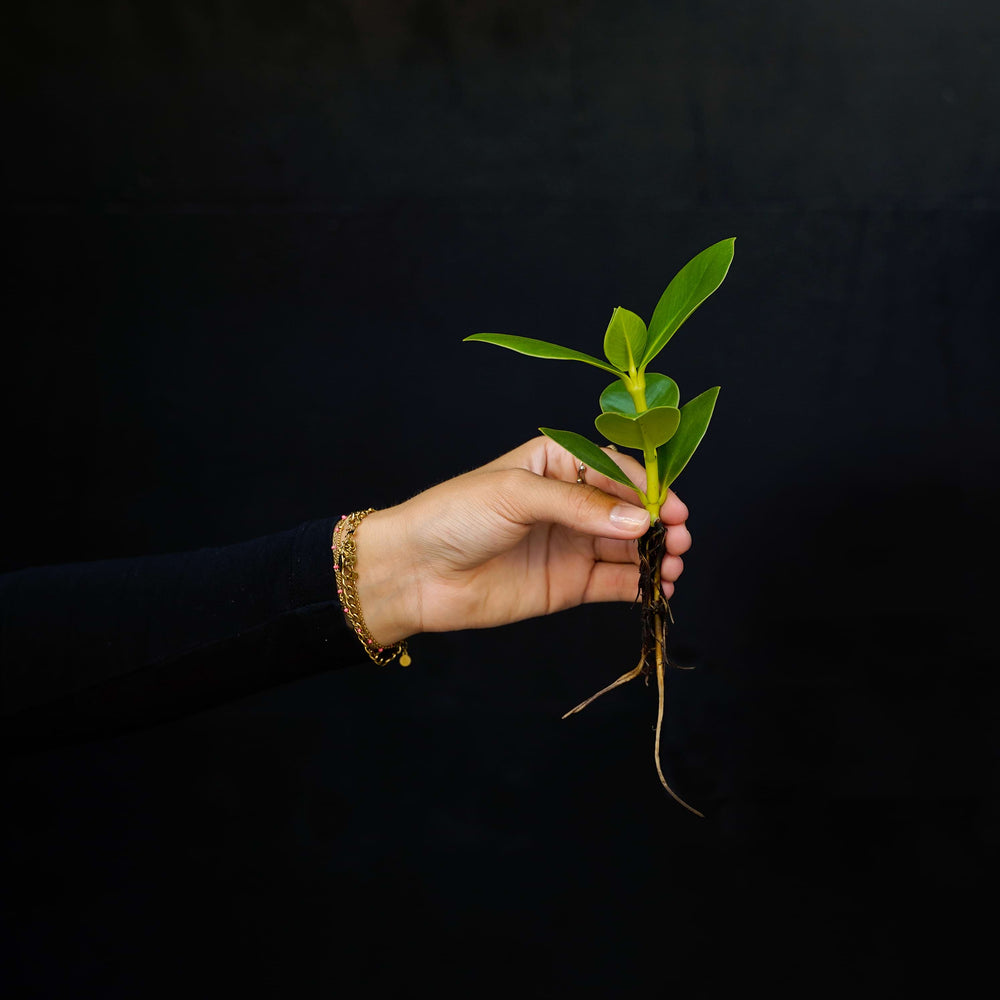Ontdek onze Clusia planten
Alles wat je wilt weten over de verzorging van je Clusia plant
Deze tropische schoonheid heeft zijn oorsprong in de Caraïben en Midden-Amerika. Het meest opvallende kenmerk van de Clusia Princess zijn de dikke, leerachtige bladeren die de plant een bijzondere, luxueuze uitstraling geven.
De Clusia Princess is een betoverende kamerplant die indruk maakt met zijn prachtige glanzende bladeren en weelderige uitstraling. Ze komt voor in verschillende soorten, elk met zijn eigen charme en persoonlijkheid. Sommige varianten hebben grotere bladeren, terwijl andere een compacter blijven: perfect voor op een tafel.
De Clusia rosea Princess is ontstaan door selectie en onderscheidt zich door een kleinere bladstructuur en vertakking. Ideaal voor de huiskamer of slaapkamer.
Ze is bekend onder de naam ‘appelvijg’, maar heeft ook nog een andere bijnaam: Autograph Tree ofwel handtekeningenboom. Je kunt namelijk tekeningen op het blad maken, die zeer lang zichtbaar blijven. In Tropische landen worden de bladeren veel beschreven; namen van geliefden worden in het blad gegraveerd of er worden tekeningen op het blad gemaakt.
De Clusia Princess voelt zich het beste op zijn gemak op een plek met helder, indirect licht. Direct zonlicht kan de bladeren beschadigen en leiden tot verkleuring. Plaats je Clusia Princess daarom bij een raam op het noorden, noosten of westen. Zo kan de plant genieten van het zachte, gefilterde licht en zal het zijn weelderige groene pracht behouden.
Deze prachtige kamerplant gedijt goed in een warme omgeving, bij een kamertemperatuur tussen de 18°C en 24°C. In de winter is het niet erg als het af en toe wat kouder is, maar liever niet onder de 15°C. Zorg er echter voor dat je hem beschermt tegen tocht, omdat een koude luchtstroom de groei kan
belemmeren.
Een goede watergift is essentieel voor een gezonde Clusia Princess. Het is afhankelijk van verschillende factoren, zoals de grootte van de plant en welke standplaats ze heeft. Het beste is dat de grond donkerbruin is, dan weet je dat het niet te droog is. Als de grond zwart is, is de aarde te nat, en de Clusia houdt er niet van om in natte aarde te staan.
Zorg ervoor dat de pot van je Clusia Princess goede drainagegaten heeft om overtollig water te laten weglopen. Gooi het overtollige water weg om wateroverlast te voorkomen. Te veel water geven leidt tot wortelrot, te weinig water resulteert in slappe bladeren.
Tip: steek 4-5 dagen na een waterbeurt je vinger in de aarde en voel hoe nat de aarde nog is. Voelt hij droog aan, dan kan de volgende waterbeurt wat meer water gegeven worden dan de vorige keer. Is de aarde nog steeds vochtig na meer dan een week, geef dan de volgende keer wat minder water. Zo kun je zelf bepalen hoeveel water er eens in de week gegeven kan worden.
Geef de Clusia Princess één keer per maand voeding in de groeiperiode, in de winter verbruikt ze minder water en voeding. Pas hier de watergift op aan door maar af en toe water en voeding te geven.
Omdat de Clusia Princess een redelijk snelle groeier is, is regelmatig verpotten nodig om haar gezond te houden. Hier zijn enkele richtlijnen voor succesvol verpotten:
Kies een pot die ongeveer 2-4 cm groter is dan de huidige pot van je Clusia. Een te grote pot kan leiden tot overbewatering, terwijl een te kleine pot de wortels beperkt.
De lente is de ideale tijd om te verpotten. De plant groeit dan actief. Vermijd het verpotten tijdens de wintermaanden, omdat de groei dan vertraagt.
Wees voorzichtig bij het verpotten om de wortels niet te beschadigen. Plaats de plant in de nieuwe pot en vul deze aan met verse potgrond. Druk de grond voorzichtig aan en geef daarna water.
Als de Clusia Princess heel groot word, kan ze baat hebben bij ondersteuning om omhoog te groeien. Je kunt daar een stevige stok voor gebruiken. Begeleid de hoofd stengel voorzichtig langs de stok terwijl de plant verder groeit.
Een Clusia Princess hoeft niet gesnoeid te worden om mooi in vorm te blijven. Maar vind je het leuk om zelf een Clusia Princess op te kweken? Dan kun je heel eenvoudig een stekje afknippen met een scherp schaartje of een mes.
Knip een lange steel of tak af, net boven het blad en plaats deze in een glas met water. Na een aantal weken zal er een worteltje aan groeien. Als de wortel sterk genoeg is zou je de plant in aarde kunnen poten om haar zo verder op te laten groeien.
Maar je kan de plant natuurlijk ook in water laten staan, dat geeft jouw interieur een vernieuwde look! Binnen ons Intenz assortiment verkopen wij de Clusia Princess ook in diverse soorten glas.
Deze tropische schoonheid heeft zijn oorsprong in de Cariben en
Midden-Amerika. Deze kleinbladige variant is ontstaan door selectie en onderscheidt zich door een kleinere bladstructuur dan de wilde Clusia en heeft ook meer vertakkingen. Ideaal voor de huiskamer of slaapkamer.
De Clusia komt in verschillende soorten, elk met zijn eigen unieke kenmerken:
- Clusia rosea Princess: Dit soort staat bekend om zijn glanzende, ronde bladeren en is een prachtige toevoeging aan elke binnenruimte.
- Clusia Guttifera: Deze variant heeft iets kleinere bladeren en een compactere groeiwijze. Het is een uitstekende keuze voor kleinere ruimtes.
- Clusia Lanceolata: Deze Clusia heeft langwerpige bladeren met een puntige vorm. Het voegt een vleugje elegantie toe aan je interieur.
- Clusia Nana: Deze variant heeft heel klein blad.
Bonte soorten zijn:
- Clusia Gold Rush
- Clusia White Star
Als je verkleuring opmerkt bij de bladeren van je Clusia Princess, kan dit verschillende oorzaken hebben:
Gele bladeren duiden vaak op te veel water. Controleer of de grond te nat is en pas de watergift aan. Te veel direct zonlicht kan ook gele bladeren veroorzaken, dus zorg voor voldoende schaduw.
Bruine bladranden worden meestal veroorzaakt door te veel direct zonlicht. Verplaats
je Clusia Princess naar een plek met indirect zonlicht. Te weinig water geven kan ook bruine bladeren veroorzaken, dus zorg ervoor dat de grond gelijkmatig vochtig blijft.
Bruine vlekken op de bladeren kunnen worden veroorzaakt door direct zonlicht, lage
luchtvochtigheid of te veel water. Pas de omgeving aan om het probleem op te lossen.
